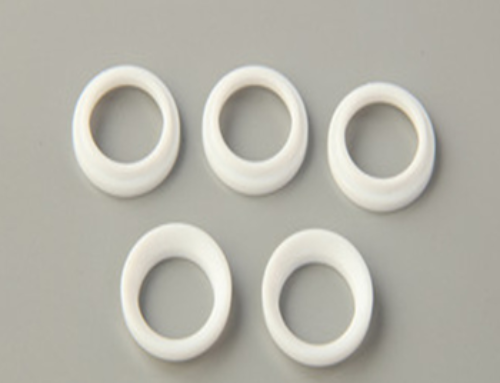PTFE RAM extrusion is a manufacturing process used to shape and form polytetrafluoroethylene (PTFE) into various products such as rods, sheets, and films. The method involves using a ram extrusion machine to apply pressure and force the PTFE material through a die, creating a specific shape. Here’s an overview of the process of PTFE RAM extrusion.
1. Preparing PTFE Resin
The process begins with preparing the PTFE resin, which is typically in the form of fine powder or granules. PTFE powder is mixed with a lubricant to facilitate the extrusion process. The lubricant helps to reduce friction, making it easier to handle the material during extrusion. The mixture is then loaded into the ram extruder.
2. Feeding into the Extruder
The prepared PTFE mixture is fed into the ram extruder, a specialized machine designed for the extrusion of PTFE. The extruder consists of a barrel, a plunger or ram, and a die. The PTFE resin is placed into the barrel, and the ram applies pressure to push the material through the die. The die is designed to shape the PTFE into the desired form, such as rods or tubes.
3. Extruding the Material
As the ram applies force, the PTFE powder is compressed and gradually heated, causing the material to soften and flow through the die. The pressure inside the barrel forces the resin into the mold, shaping it according to the die’s dimensions. During this stage, the temperature is carefully controlled to ensure the PTFE does not melt but retains its solid form.
4. Sintering
Once the PTFE has been extruded into the desired shape, it undergoes a sintering process. Sintering involves heating the extruded PTFE material to a high temperature, usually around 350°C to 370°C. This step helps the particles fuse together, creating a solid, durable product. The sintering process ensures that the material gains the required mechanical strength and performance properties.
5. Cooling and Finishing
After sintering, the PTFE product is cooled gradually to maintain its structural integrity. The extruded part is then cut to the required length, and any surface finishing such as polishing or trimming is performed to achieve the final product.
Conclusion
PTFE RAM extrusion is a versatile process that allows the production of high-quality PTFE components. By carefully controlling the temperature, pressure, and shaping techniques, manufacturers can create products with excellent chemical resistance, high thermal stability, and low friction properties.













Leave A Comment
You must be logged in to post a comment.